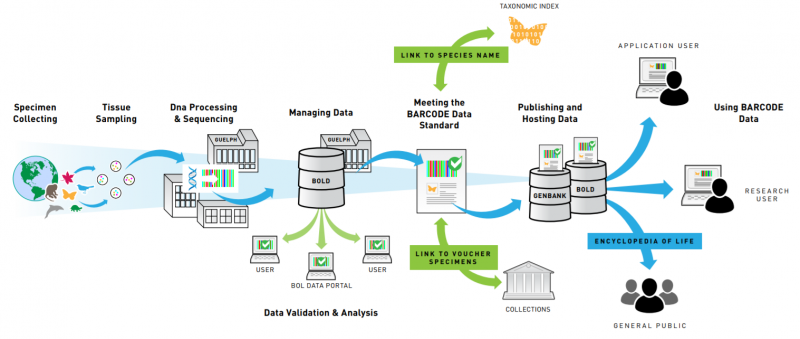DNA Bar-coding as a species identification tool

Conventional identification involves assessment of morphological characters according to a taxonomic key. This requires experienced taxonomists and the organism/sample must have physically identifiable traits and must be in an intact state i.e. not degraded or decomposed. Species assignment is now supported by a DNA barcode – a specific DNA sequence that is unique to that species and no other. The barcode is generated from a defined gene region that is used as the standard barcode for a group of species. For example, for fungi, the universal barcode is the internally transcribed spacer region (ITS1-5.8S-ITS2), for animals - it’s the cytochrome oxidase I gene (COI), for plants - it’s the MatK, RBCL dual barcodes.
To date, research that is being carried out includes the following:
- Identification of fungal pathogens from plants and polluted soil
- Identification and confirmation of taxonomic status of endemic dicotyledonous plants
- Use of DNA barcoding in wildlife forensics (coming soon in 2018!)
- Use of DNA barcoding for confirmation of species identity of Donax
Research Team Members: Dr. Sephra Rampersad (primary investigator), Amanda Ramdass (research assistant and postgraduate student), Vijai Ramdhan (Biochemistry Laboratory Technician), Stephen Narine (Field Assistant), Ria Villafana (volunteer graduate), Jonathan Ramtahal and Dr. Azad Mohammed (postgraduate student and immediate supervisor, respectively, for Donax work only)






